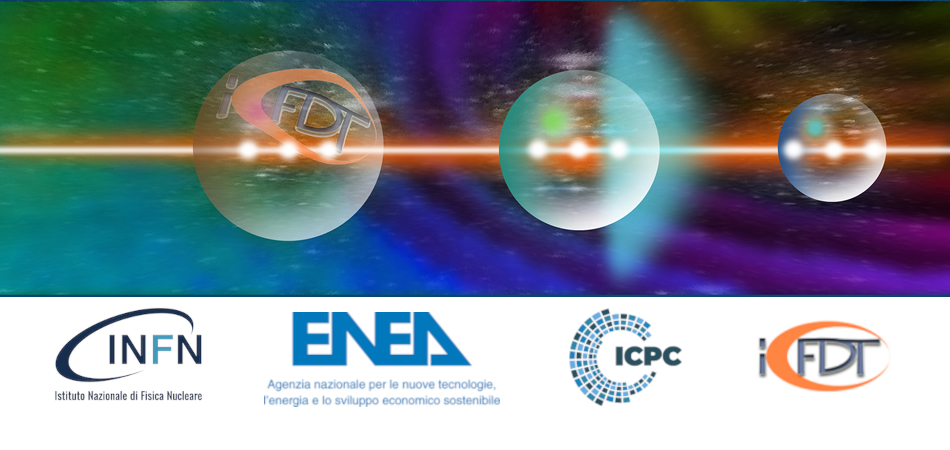Speaker
Description
The Polarimetry measurements, i.e. Faraday Rotation(FR) and Cotton-Mouton Phase Shift (CM), are useful as constraint for the determination of the plasma equilibrium and for the measurement of the plasma density, respectively [1,2]. The modelling tool for polarimetry, tested on JET data, is the Stokes model [3], where FR and CM are calculated using the spatial profile of the components Br and Bz ( both perpendicular components in the poloidal plane) of the plasma magnetic field(B) determined by the equilibrium. In the 2nd Deuterium-Tritium Campaign (DTE2) discharges, the Fast Particle Pressure (FPP) can be significant at plasma centre: in the pulse# 99643 the TRANSP evaluation gives the FPP at the level of 30% of the thermal DT pressure at plasma centre(at time=49.8s). The FR measurement ( in channel #3), in the same discharge #99643, follows in time the periodically varying ICRH (Ion Cyclotron Resonance Heating), the measured neutron flux and the fusion energy production. This means that the structure of the magnetic field internal to the plasma can be significantly influenced by FPP. Then, in general EFIT computations must include FPP from NBI (neutral beam injection) and also ICRH. In fact, in the 2nd Deuterium-Tritium Campaign (DTE2) a new feature emerged in the polarimetry measurements: the need to include the fast particle effects on equilibrium for evaluating the FR, in particular for the line of sight intersecting the plasma center. This effect appears also in the DTE2 record fusion energy pulse #99971 and in the ‘afterglow’ scenario ( pulse #99946). This procedure is essential for the evaluation of FR in the line of sight passing through the plasma magnetic centre ( i.e. the polarimetry channel# 3 ) while the other channels are not sensible to the effects of FPP. The CM evaluation seems far less sensible to the FPP effects.
see the author list of ‘Overview of T and D-T results JET with ITER-like wall’ by C Maggi et al. to be published in Nuclear Fusion Special Issue for IAEA FEC23 London 19-21 oct.2023.
(**) See the author list of âProgress on an exhaust solution for a reactor using EUROfusion multi-machines capabilitiesâ by E. Joffrin et al. to be published in Nuclear Fusion Special Issue: Overview and Summary Papers from the 29th Fusion Energy Conference (London, UK, 16-21 October 2023).
ENEA Department Fusion and Nuclear Safety, Frascati,Italy
ISTP Corso Stati Uniti , Padova , Italy
Consorzio RFX and CNR
CCFE, Culham Science Centre, Abingdon, UK
Email: francesco.orsitto@enea.it
References
[1] F P Orsitto and S E Segre, PPCF 61 ( 2019) 055008
[2] Blaise Faugeras , Francesco Orsitto et al, Nucl Fusion 58(2018) 106032 [3] F P Orsitto et al , PPCF 53 (2011) 035001, and ibid. 50(2008)115009

